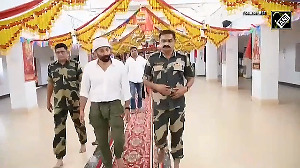 Payments and banking transactions through mobile phones in India are expected to touch $350 billion (Rs 1,560 crore) by 2015, according to The Boston Consulting Group (BCG), a global management consulting firm.
Payments and banking transactions through mobile phones in India are expected to touch $350 billion (Rs 1,560 crore) by 2015, according to The Boston Consulting Group (BCG), a global management consulting firm. This will provide banks, telecom operators, device makers and service providers an opportunity to earn fee income of $4.5 bn, it said.
"It is far less costly to offer banking and payment services using mobile technology than to build new (bank) branches in a country that, outside of major cities, is still largely rural," BCG said in its study, 'Digital India The rush to mobile money: madness or masterstroke?'.
"Mobile-enabled business correspondents, who are authorised to conduct business on behalf of banks, can serve a customer for eight to 15 cents per transaction, far below the $1.0-1.5 cost at a branch," it added.
Banks and mobile phone companies have already started preparing themselves to seize a share of this business.
The country's largest lender, State Bank of India (SBI), has joined hands with Bharti Airtel. The biggest private lender, ICICI Bank, has formed a partnership
India has a little over 500 million mobile phone subscribers, compared with 240 million individuals with bank accounts. There are 88,000 bank branches, 70,000 automated teller machines and 20 million credit cards in the country.
"More than half of Indian households - 110 million altogether - do not have a bank account. Yet, of the households without a bank account, 42 per cent have at least one mobile phone. And, nearly 90 per cent of those phones are capable of handling basic financial transactions," BCG said.
The business opportunity in mobile payment services has also lured phone manufacturers. Nokia recently teamed with Union Bank of India and Obopay to offer mobile banking services. BCG expects government payments through mobile-based transactions to touch $40 bn (Rs 1,780 crore) by 2015.
The largest share is expected from remittances of urban workers to their families in rural centres, expected to be $70 billion (Rs 3,120 crore) annually in the next four years.
These transfers are currently done through money orders and couriers, which are more expensive and time consuming, BCG said.












 © 2025
© 2025